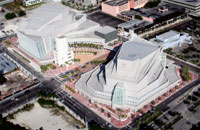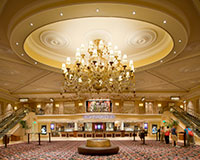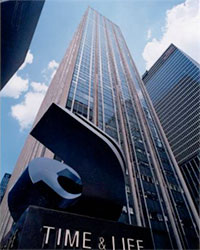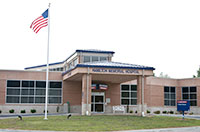view all Case Studies
Chicago Museum Installs Intelligent Restrooms
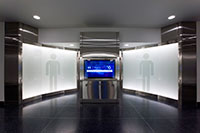
Chicago’s Museum of Science and Industry has a reputation for being a world-class museum with a focus on educating the public about inventions, scientific discoveries and other notable historic developments. It should be no surprise, then, that the museum would be open to exploring new ideas of its own to meet facility operational requirements.
March 7, 2011 -
Plumbing & Restrooms
Chicago’s Museum of Science and Industry has a reputation for being a world-class museum with a focus on educating the public about inventions, scientific discoveries and other notable historic developments. It should be no surprise, then, that the museum would be open to exploring new ideas of its own to meet facility operational requirements.
When the museum renovated its largest public restroom and added two restrooms, the facilities management team chose to install water-efficient fixtures. Moreover, the restroom projects offered a prime opportunity to test Sloan Monitored Systems (SMS), a networked, software-based water control system from Sloan Valve Company, in those three restrooms.
Water savings began when the museum installed the company’s low-consumption fixtures. The facility replaced manual 3.5 gpf water closets with sensor-operated 1.6 gpf water closets, manual 1.5 gpf urinals with Waterfree urinals, and manual metering faucets operating at 0.25 gallon-per-use with sensor-operated 0.5 gpm faucets. The water closet, faucet and Waterfree urinals updates have saved almost 1.1 million gallons annually.
Occupancy sensors at the door to each restroom count how many people enter. Counters placed at each water closet and urinal ensure that housekeeping replaces the urinals’ cartridges before they are depleted; the system issues a warning when a urinal comes within about 100 uses of expiration. SMS sensors are also hooked to the electronic faucets and soap dispensers to issue an alert if a faucet is running non-stop or a dispenser is low on soap. An air sensor that monitors air quality in each of the restrooms is also connected to the system.
System alerts feed into a computer in the central dispatch office, which is monitored 24/7, and tie into the museum’s work order system, which may either send an e-mail to the housekeeping staff office or automatically generate work tickets. The system typically sends alerts on more everyday matters, such as soap dispensers needing to be refilled, rather than emergencies. In the case of a more serious issue, such as a lavatory blockage, a plumber gets dispatched directly to address the issue.
Next
Read next on FacilitiesNet









